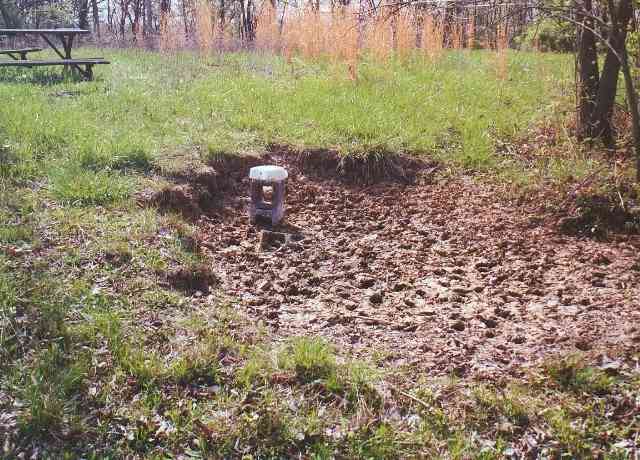|
This is one of the most common forms among the thousands of simple tools at this site. The six light-colored limestone scrapers (top two rows, top photo) appeared within about 1m of each other at a depth of about 25cm (10") at the top of the hill in a hole dug out by deer around a salt block. They were accompanied by numerous other implements of the same material, and debitage. This location is about 24m (80') vertically and 140m (450') horizontally distant from the nearest visible limestone outcrop. The small implement bottom left in the top photo is of the more prevalent darker limestone, and the hand axe or abrader bottom right is sandstone; these ap- peared at other locations on the site. The photo below shows a large hand axe(?) with almost exactly the same form as the scraper bottom left in the top photo. Click image for enlarged views: As popular as it seems to have been, perhaps this form was the precursor of the well known bannerstone associated with the Archaic period in North America. Below is a photo of one of these from Ohio, ca. 3000 years BP:
Below: Left is a bannerstone (9.5 cm - 3.75") from the collection of Ken Spaulding in Michigan, incorporating the bifrontal bird image (complete with carved eyes) that appears in cruder form at Day's Knob, a melding of bird figure and bannerstone, which seem to derive from a common image. Right is a two-faced bird from beneath a deer path close to the hole that yielded the six trianguloids (shown above) of the same light-colored limestone as this figure. Just for fun, compare the two-bird bannerstone above with the pre-dynastic Egyptian pendent below:
|



